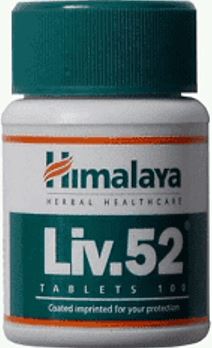Qualitative and Quantitative Standardization of Liv.52: A Polyherbal Formulation
Standardization of Liv.52: A Polyherbal Formulation
DOI:
https://doi.org/10.21760/jaims.10.7.9Keywords:
Liv.52, Standardization, UV-Visible spectrophotometric, total phenols, total flavonoidsAbstract
Standardization of a polyherbal formulation is essential for establishing the authenticity, quality and efficacy of finished herbal product. World Health Organization (WHO) has given the preliminary guidelines for standardizing herbal formulations. The present work is an attempt to standardize Liv.52, using simple, non-expensive spectrophotometric method, including phytochemical screening and determination of various physicochemical parameters. Liv.52 is a polyherbal ayurvedic formulation, is the world's best-selling liver support formula, used for liver strengthening and repairing the damaged liver cells. Phytochemical screening of Liv.52 showed the presence of phenols, flavonoids, steroids and alkaloids. The formulation found to contain total ash (7.8 % ± 0.2), water-soluble ash (3.0 % ±0.3) and acid-insoluble ash (1.4% ±0.1) within the prescribed standard limits. The alcohol extractive value of the formulation was found to be more, 38.62% compared to the water-soluble extractive value, 28.44%. The total phenolic and flavonoid content of the formulation was found to be 9.8% and 5.6%, equivalent to gallic acid and rutin respectively.
Downloads
References
Sen S, Chakraborty R, De B. Challenges and opportunities in the advancement of herbal medicine: India’s position and role in a global context. J Herb Med. 2011;1(3-4):67–75. doi:10.1016/j.hermed.2011.11.001
Taleuzzaman M, Siddique SA. Chromatographic method used in herbal drug standardization. Asian J Pharm Anal Med Chem. 2016;4(4):157–65.
Sen S, Chakraborty R, De B, Ganesh T, Raghavendra HG, Debnath S. Analgesic and anti-inflammatory herbs: a potential source of modern medicine. Int J Pharm Sci Res. 2010;1(11):32–44. doi:10.13040/IJPSR.0975-8232.1(11).32-44
Duraiswamy A, Shanmugasundaram D, Sasikumar CS. Evaluation of the phytochemical constituents in ADJ6, an anti-diabetic polyherbal formulation by GC-MS. J Pharmacogn Phytochem. 2016;5(1):173–7.
Guo L, Duan L, Dou LL, Liu LL, Yang H, Liu EH. Quality standardization of herbal medicines using effective compounds combination as labelled constituents. J Pharm Biomed Anal. 2016;129:320–31. doi:10.1016/j.jtcme.2014.12.002
Azeemuddin M, Rafiq M, Anturlikar SD, Sharath Kumar LM, Patki PS, Babu UV, Shyam R. Extract of a polyherbal formulation ameliorates experimental nonalcoholic steatohepatitis. J Tradit Complement Med. 2016;6(2):160–7.
PharmEasy. Himalaya Liv.52 DS Tablets - 60's [Internet]. [cited 2025 Jul 26]. Available from: https://pharmeasy.in/health-care/products/himalaya-liv-52-ds-tablets---60-s-12836
Kantharia C, Kumar M, Jain MK, Sharma L, Jain L, Desai A. Hepatoprotective effects of Liv.52 in chronic liver disease preclinical, clinical, and safety evidence: A review. Gastroenterol Insights. 2023;14(3):293–308. doi:10.3390/gastroent14030021
Kokate CK, Purohit AP, Gokhale SB. Pharmacognosy. 48th ed. Pune: Nirali Prakashan; 2013. p.7.16–47.
Evans WC. Trease and Evans Pharmacognosy. 15th ed. London: Saunders Elsevier; 2002. p.193.
Parekh J, Chanda S. Antibacterial and phytochemical studies on twelve species of Indian medicinal plants. Afr J Biomed Res. 2007;10:175–81. doi:10.4314/ajbr.v10i2.50624
Indian Pharmacopoeia. Volume I. 6th ed. Ghaziabad: The Indian Pharmacopoeia Commission, Ministry of Health & Family Welfare, Government of India; 2010.
The Ayurvedic Pharmacopoeia of India. Part I, Vol VI. New Delhi: Department of AYUSH, Ministry of Health & Family Welfare, Government of India; 2008. p.325,492.
Kaur P. Comparative study of pharmacognostical and preliminary phytochemical investigation of Curcuma longa leaves and rhizomes. Pharma Tutor. 2016;4(10):31–6.
Meena AK, Rekha P, Ilavarasan R. Determination of heavy metal contents in herbal plant leaves collected from different locations of Chennai city. Int J Compreh Adv Pharmacol. 2019;4(2):53–5. doi:10.18231/j.ijcaap.2019.011
Lutoti S, Okwany P, Ajayi CO, Oloro J. Formulation and standardization of herbal medicinal products: a review of the formulation considerations, quality control and safety of herbal products. J Pharm Drug Res. 2020;3(3):373–81.
Baba SJ, Malik SA. Determination of total phenolic and flavonoid content, antimicrobial and antioxidant activity of a root extract of Arisaema jacquemontii Blume. J Taibah Univ Med Sci. 2015;4:449–54. doi:10.1016/j.jtusci.2014.11.001
Vador N, Vador B, Rupali H. Simple spectrophotometric methods for standardizing Ayurvedic formulation. Indian J Pharm Sci. 2012;74(2):161–3. doi:10.4103/0250-474X.103852
Atanasov AG, Waltenberger B, Pferschy-Wenzig EM, et al. Discovery and resupply of pharmacologically active plant-derived natural products: A review. Biotechnol Adv. 2015;33(8):1582–614. doi:10.1016/j.biotechadv.2015.08.001
Mukherjee P. Quality Control of Herbal Drugs. 5th ed. New Delhi: Business Horizons; 2002. p.160–92.
Kaur P, Gupta RC, Dey A, Malik T, Pandey DK. Validation and quantification of major biomarkers in ‘Mahasudarshan Churna’—an ayurvedic polyherbal formulation through high-performance thin-layer chromatography. BMC Complement Med Ther. 2020;20(1):184. doi:10.1186/s12906-020-02970-z















